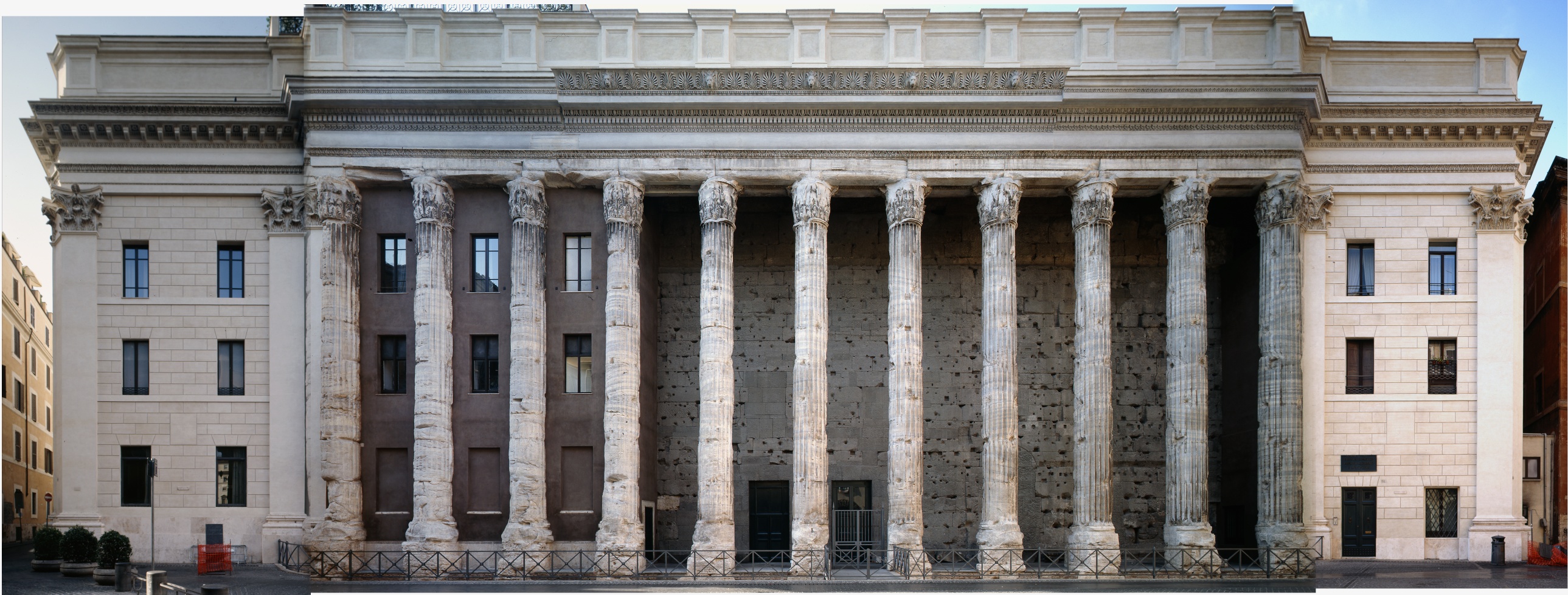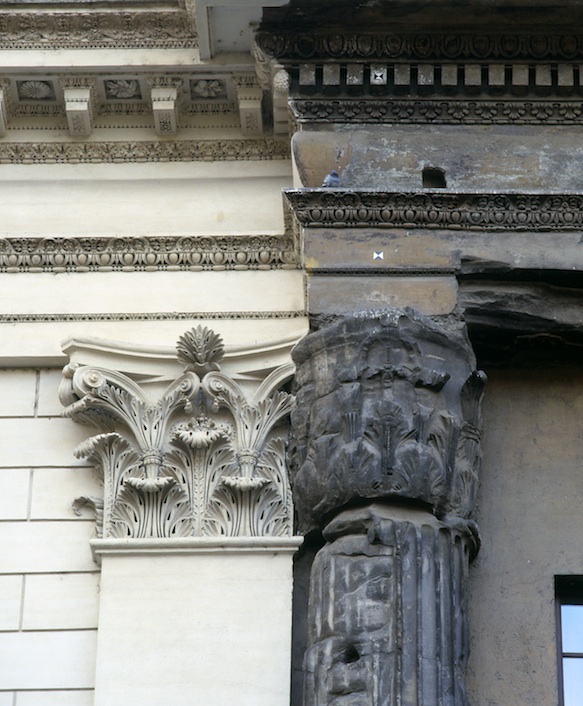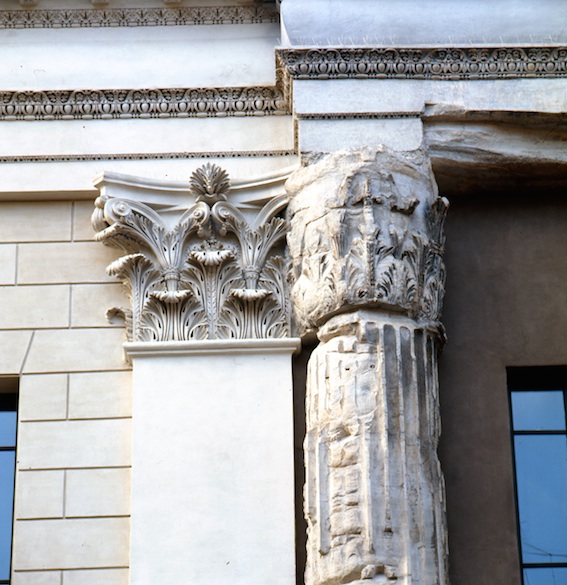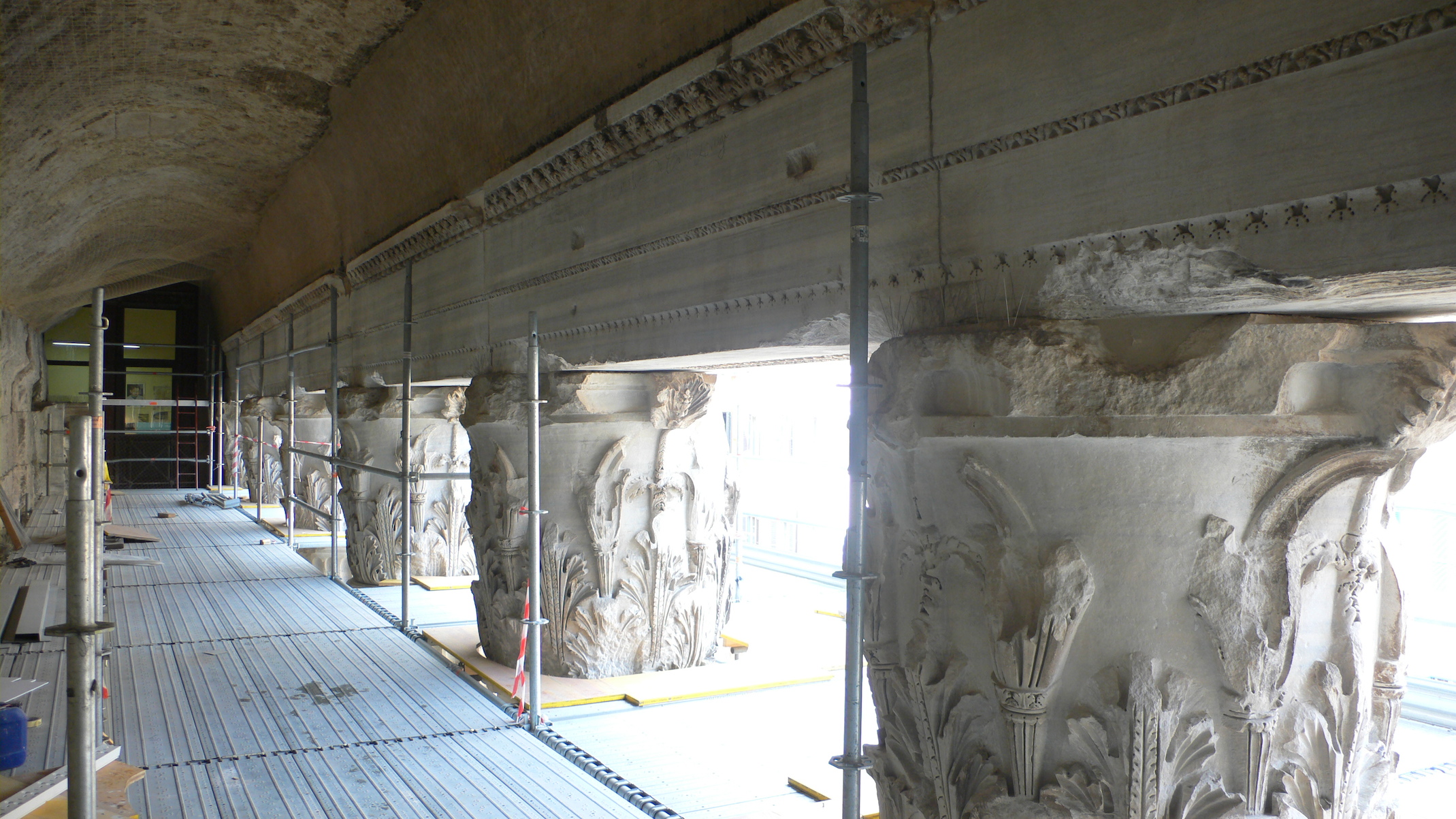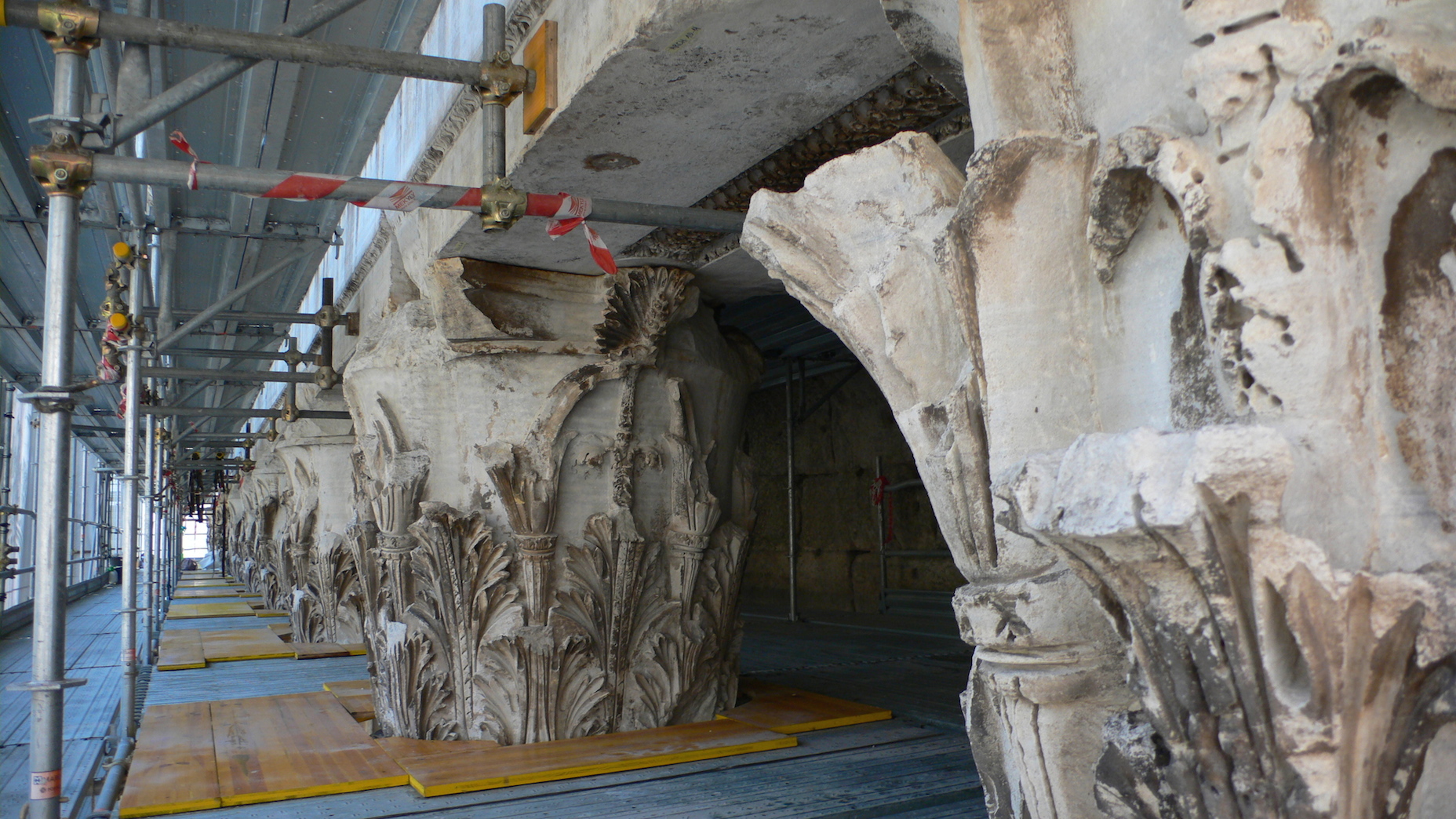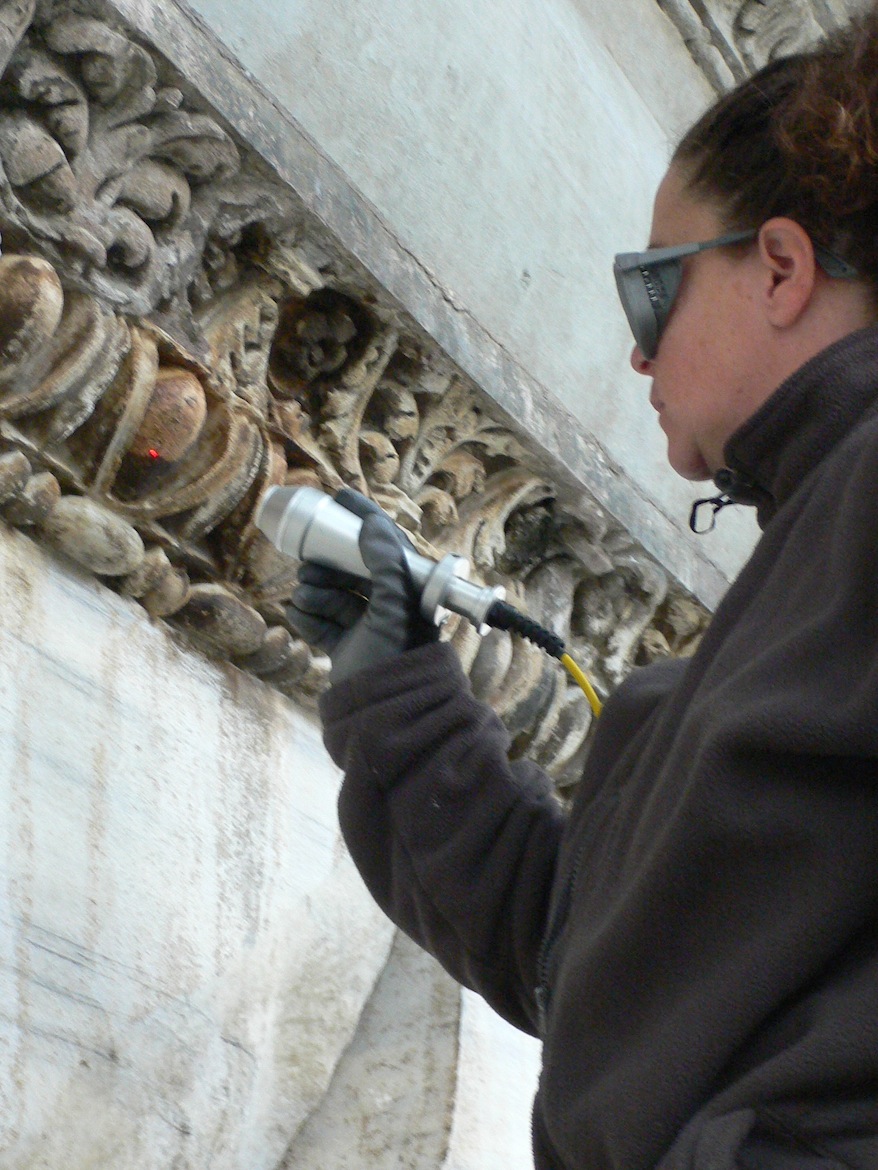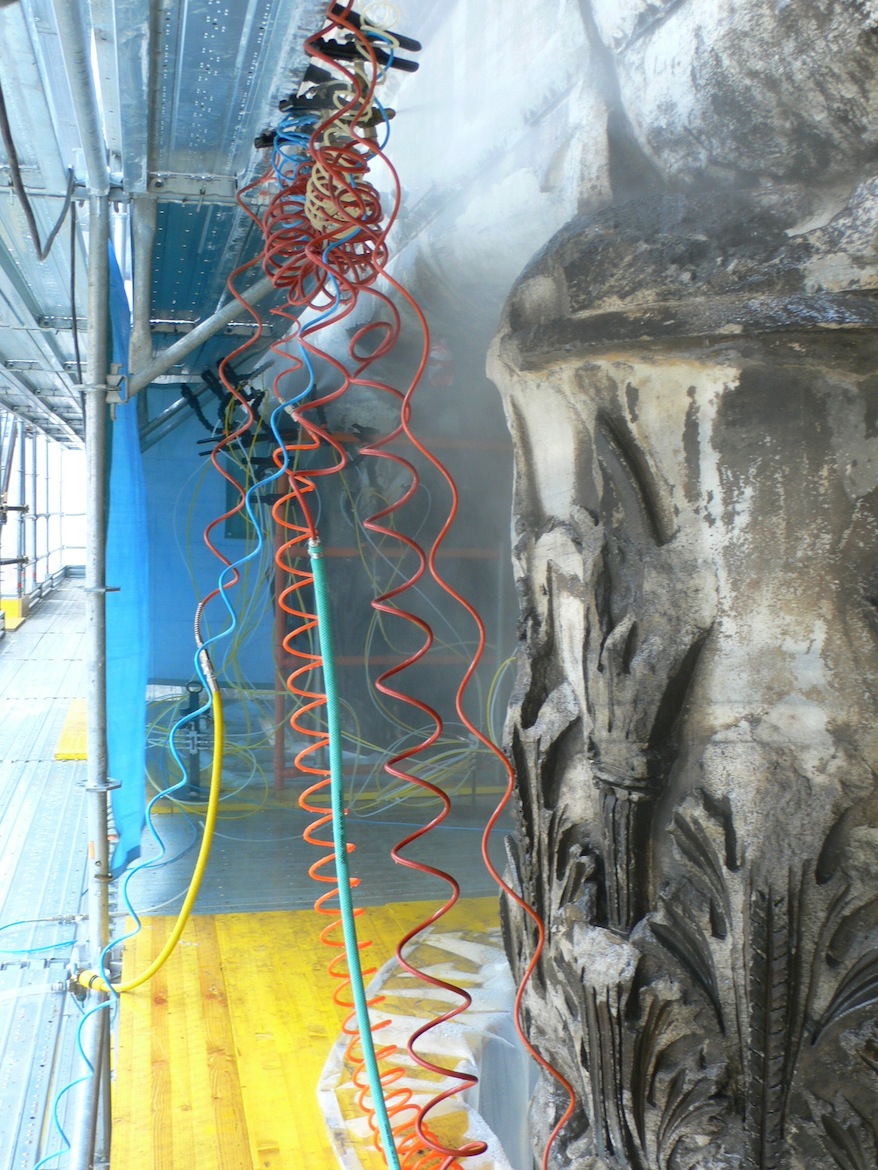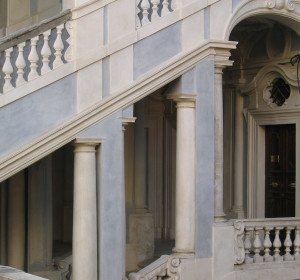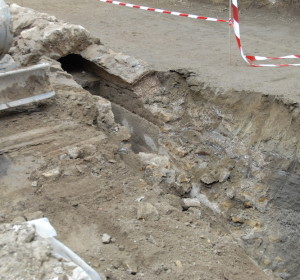Rome, Temple of Adriano
Date
Saturday November 19th, 2016
DATA SHEET
DATING:
Thassos and Peperino marble architectural elements of Hadrian era. architectural elements in stucco and plaster sec. XIX
LOCATION:
Rome, Pietra Square – Chamber of Commerce Palace
CUSTOMER:
Chamber of Commerce – Rome
WORKS MANAGEMENT:
Archaeological Superintendency of Rome – Dr Fedora Filippi; Superintendence for Architectural Heritage of Rome – Arch. Paola Santilli
PERIOD OF INTERVENTION:
15/01/2007 – 18/04/2008
Work executed in ATI with the Cooperative C.B.C.
THE PROBLEM
The ruins of the northern side of Hadrian’s Temple, dedicated in 145 BC, with eleven of the thirteen Corinthian columns of the peristyle and trabeation, incorporated in the actual Palace of the Chamber of Commerce in Square of Pietra, represent one of the most important monuments of Rome.
The restoration has faced, beyond the strictly static problems and the conservation ones, the overall theme of the connection between the previous and the current restoration intervention and the relationship between the ancient monument and its configurations, which also have to be restored, seeking the point of balance between the philological respect of historical stratification of the building and the need to give back a correct visual perception of the ancient monument.
THE METHOD
The headstone elements were object of a strictly preservative intervention inspired by the conservation of all the historical – or historicized – traces.
The oxalate films preservation has been dictated by a policy of caution: their tenacity and perfect adhesion to the surface of the stone make the removal a dangerous process. A different choice has only been made for the marble parts of the architrave, in an attempt to give continuity to this architectural element so battered.
With the laser has been removed or lightened the latest coating which interrupted, with black stripes alternating with white areas cause of placer mining, the flat elements and, in the frames carved in ovules, created a negative effect with the darker ridges of undercuts. The presence of a darker patina on a lighter color allowed us to guide the choice in this way.
Our intervention has faced in a unified way the restoration of the archaeological urgencies and of the architecture of the façade on Pietra Square. Once the restoration of archaeological pieces was finished, it was therefore necessary to highlight the architectural organism as a result of so many transformations. The architrave reconstructions were painted with similar tones as per Fontana choices, to conclude the Roman monument. About the three left intercolumniation and the lateral cladding of the peristasis has been drawn a pozzolana mortar, as far as possible already colored in the dough, so that it assume a bottom character, in continuity with the rest of the columns, negating any architectural design in this portion of the building.
